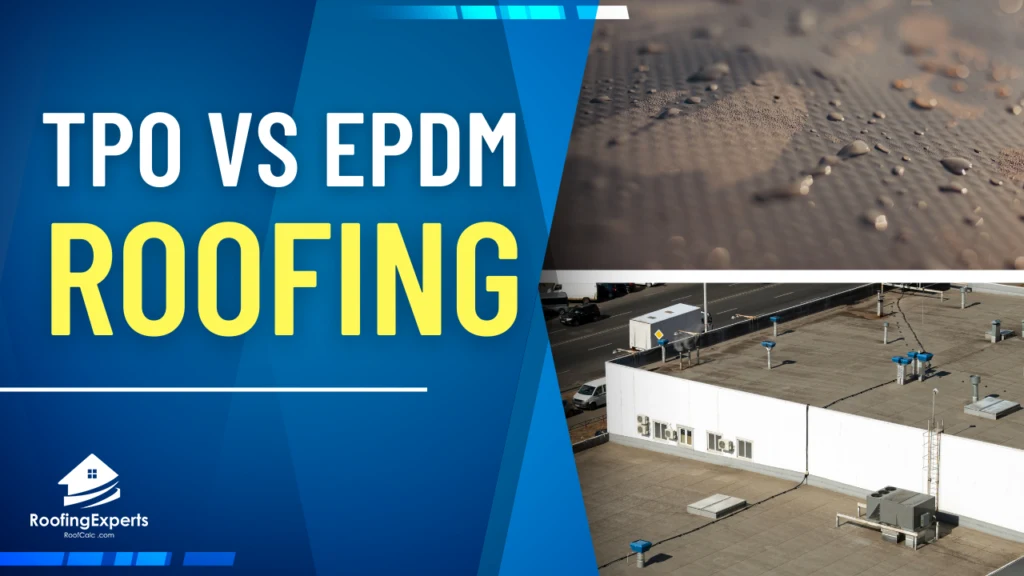
Are you in the market for a new roofing system and unsure whether to choose TPO or EPDM? Both TPO and EPDM have been popular choices for commercial and residential roofing systems for years, but what are the differences between the two, and which one is right for your property?
In this article, we’ll compare TPO and EPDM roofing systems, exploring the pros and cons of each material, installation costs, durability, and maintenance requirements. We’ll also share tips on how to choose the best roofing option for your needs and budget.
So, whether you’re a property owner, contractor, or DIY enthusiast, keep reading to learn everything you need to know to make an informed decision between TPO and EPDM roofing!
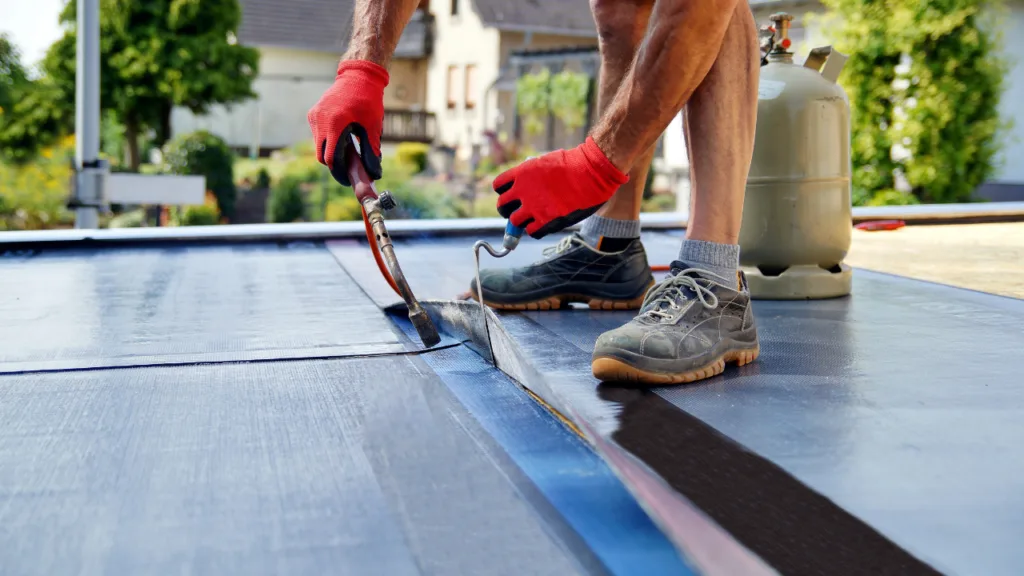
What is TPO Roofing?
If you are considering a commercial roofing system, you may have come across TPO roofing. TPO stands for Thermoplastic Polyolefin, a type of roofing membrane that is becoming increasingly popular in the roofing industry.
In this section, we will explain what TPO roofing is, its properties, and how it compares to other roofing systems.
Thermoplastic Polyolefin (TPO) Explained
TPO roofing is a single-ply roofing membrane that is made of a blend of polypropylene and ethylene-propylene rubber. The material is reinforced with fiberglass and talc, which gives it strength and durability.
TPO roofing is known for its heat-welded seams, which create a continuous, monolithic membrane that is resistant to punctures and leaks.
One of the main benefits of TPO roofing is its energy efficiency. TPO roofing is designed to reflect sunlight and prevent heat from entering the building, which can help reduce energy costs.
TPO roofing is also lightweight, making it an ideal choice for flat roofs. Additionally, TPO roofing is mechanically fastened or adhered to the roof deck, making it a secure and durable roofing system.
When it comes to maintenance, TPO roofing requires minimal upkeep. The material is resistant to mold, algae, and other types of fungi, which means it does not need to be cleaned regularly.
TPO roofing is also resistant to tears and punctures, which means it can withstand harsh weather conditions and foot traffic. However, if a TPO roof does become damaged, it can be easily repaired by a professional.
In summary, TPO roofing is a popular commercial roofing system that is known for its energy efficiency, durability, and low maintenance requirements. Its heat-welded seams and resistance to punctures and leaks make it an excellent choice for flat roofs.
What is EPDM Roofing?
If you are considering a flat roof for your commercial building, you may have come across EPDM roofing. EPDM stands for Ethylene Propylene Diene Monomer, which is a type of synthetic rubber that is commonly used in roofing systems.
Ethylene Propylene Diene Monomer (EPDM) Explained
EPDM roofing is made from a mixture of recycled rubber materials and other ingredients like slate and sawdust. The result is a durable and weather-resistant membrane that is ideal for flat roofs. EPDM roofing is also known for its excellent insulation properties, which can help reduce heating and cooling costs.
One of the key benefits of EPDM roofing is its durability. EPDM roofs can last up to 30 years with proper maintenance, and they are resistant to damage from hail, wind, and other weather-related events.
Additionally, EPDM roofing is easy to install and can be mechanically fastened to the roof deck.
When it comes to maintenance, EPDM roofing requires very minimal upkeep. You should inspect your roof regularly for any signs of damage or leaks, and make repairs as necessary.
However, EPDM roofing is not immune to damage, and you may need to hire a professional to repair any major issues.
EPDM roofing is a popular choice for commercial roofing systems because of its affordability and ease of installation. It is also a great option for flat roofs, as it can be installed in large sheets without seams.
If you are looking for a durable and low-maintenance roofing system, EPDM roofing may be the right choice for you.
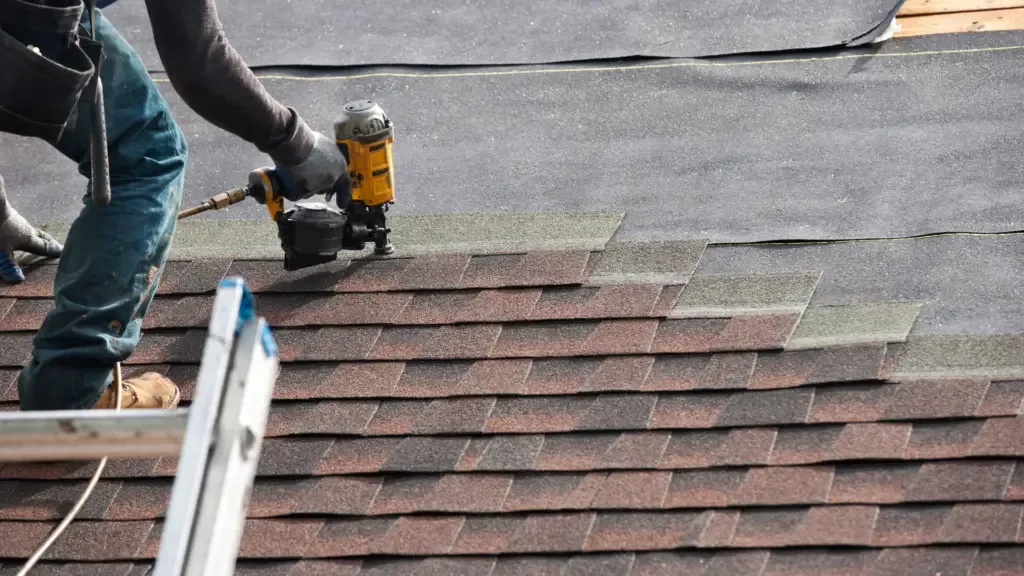
TPO vs EPDM Roofing
When it comes to roofing materials, TPO (thermoplastic polyolefin) and EPDM (ethylene propylene diene monomer) are two of the most popular options. Here are some factors to consider when choosing between the two.
Durability and Longevity
Both TPO and EPDM are durable and long-lasting roofing materials. TPO is known for its resistance to punctures and tears, while EPDM is more susceptible to damage from hailstorms.
However, EPDM is more flexible and can better withstand extreme temperatures.
Ease of Installation
TPO and EPDM are both relatively easy to install, but TPO requires specialized equipment for welding the seams together. EPDM, on the other hand, can be installed using a variety of methods, including ballasted, mechanically fastened, and fully adhered.
Energy Efficiency
TPO is considered more energy-efficient than EPDM, thanks to its reflective surface that helps to reduce heat absorption. This can lead to lower energy bills and a more comfortable indoor environment.
Resistance to Hailstorms, Rain, and Snow
While both TPO and EPDM are resistant to rain and snow, TPO is generally considered more durable in hailstorms. However, EPDM’s flexibility can help it withstand heavy snow loads without cracking or breaking.
Cost Comparison
When it comes to cost, EPDM is generally less expensive than TPO. However, TPO’s energy efficiency and durability may make it a more cost-effective option in the long run.
| Material | Cost per square foot |
|---|---|
| TPO | $5-$9.50 |
| EPDM | $4-$8 |
In summary, the choice between TPO and EPDM roofing depends on your specific needs and budget. TPO is more energy-efficient and durable, but may require specialized installation equipment and be more expensive.
EPDM is more affordable and flexible, but may be more susceptible to hail damage.
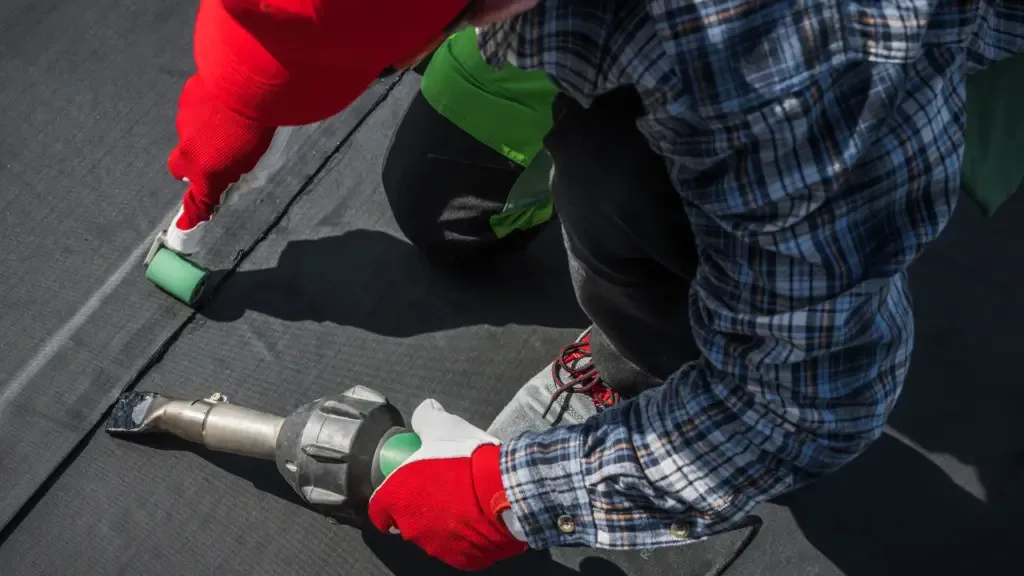
Types of TPO and EPDM Roofing Systems
When it comes to TPO and EPDM roofing, there are several types of systems available. Each system has its own advantages and disadvantages, so it’s important to choose the right one for your needs.
Mechanically Fastened Systems
Mechanically fastened systems involve attaching the roofing membrane to the roof deck using mechanical fasteners such as screws or nails. These systems are typically less expensive than fully adhered systems, but they may not be as durable in high wind or heavy rain conditions.
Fully Adhered Systems
Fully adhered systems involve gluing the roofing membrane to the roof deck using an adhesive. These systems provide better wind resistance and waterproofing than mechanically fastened systems, but they may be more expensive.
Single-Ply Membrane Roofing
Both TPO and EPDM are single-ply membrane roofing systems. This means that they consist of a single layer of roofing membrane that is installed over the roof deck.
Single-ply membrane roofing is lightweight, easy to install, and provides excellent waterproofing.
Silicone Restoration System
A silicone restoration system involves applying a silicone coating to an existing TPO or EPDM roof. This can extend the life of the roof and provide additional waterproofing.
However, it is not suitable for roofs that are severely damaged.
Roof Coating Systems
Roof coating systems involve applying a coating to an existing TPO or EPDM roof. This can provide additional waterproofing and extend the life of the roof. However, it is not suitable for roofs that are severely damaged.
Overall, each type of TPO and EPDM roofing system has its own advantages and disadvantages. It’s important to choose the right system for your needs based on factors such as cost, durability, and resistance to wind and rain.
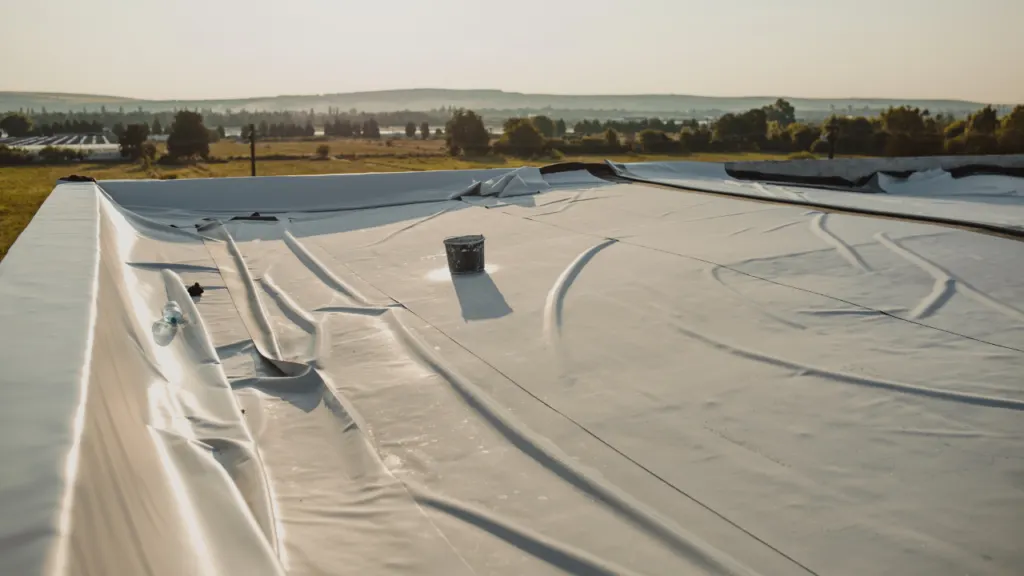
Why Choose TPO Roofing?
If you’re in the market for a new commercial roofing system, TPO roofing is definitely worth considering. Here are some reasons why TPO roofing might be the right choice for you:
Energy Efficiency
TPO roofing is known for its energy efficiency. It has a highly reflective surface that can help reduce the amount of heat absorbed by your building, which can in turn reduce your cooling costs. This can be especially important in hot climates or during the summer months.
Durability
TPO roofing is also known for its durability. It is made from a single-ply membrane that is reinforced with a reinforcing scrim. This makes it resistant to tears, punctures, and impact damage. TPO roofing can also withstand extreme weather conditions, including high winds and heavy rain.
Cost-Effective
TPO roofing is often more cost-effective than other types of commercial roofing systems. It is typically less expensive than PVC roofing, and it can be installed more quickly and easily than EPDM roofing. This can help save you money on both materials and labor costs.
Easy Installation
TPO roofing is relatively easy to install. It can be installed using a variety of methods, including fully adhered, mechanically attached, and ballasted. This makes it a versatile option that can be tailored to your specific needs.
Overall, TPO roofing is a great choice for commercial buildings that require an energy-efficient, cost-effective, and durable roofing system. If you’re looking for a roofing system that can help reduce your energy costs and withstand the elements, TPO roofing might be the right choice for you.
Why Choose EPDM Roofing?
If you are looking for a roofing material that is cost-effective, durable, and easy to install, EPDM roofing might be the perfect choice for you. Here are some reasons why you should consider EPDM roofing:
- Industry Leader: EPDM is a time-tested and proven roofing material that has been used in the roofing industry for over 50 years. It is a popular choice for commercial and residential roofing due to its durability, longevity, and ease of installation.
- No Electrical Source Required: Unlike TPO roofing, EPDM roofing does not require an electrical source for welding. This means that it is easier and quicker to install, and there is less risk of electrical hazards during installation.
- Ideal for Solar Panels: If you are planning to install solar panels on your roof, EPDM roofing is an excellent choice. It is compatible with most solar panel systems and does not require any special preparation or installation techniques.
- Fewer Leaks: EPDM roofing is less likely to develop leaks than other roofing materials. It is a single-ply membrane that is installed in large sheets, which means there are fewer seams and joints that can fail over time.
In summary, EPDM roofing is a reliable and cost-effective roofing material that is ideal for a wide range of applications. Whether you are looking for a roofing material for your commercial or residential property, EPDM roofing is definitely worth considering.
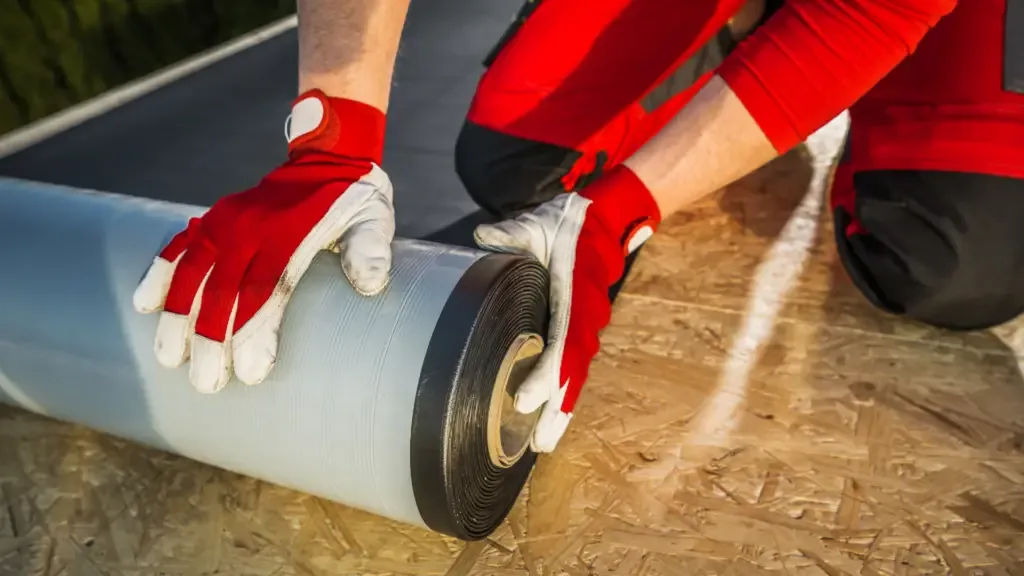
Conclusion
Choosing the right roofing material for your building is a crucial decision that requires careful consideration. Both TPO and EPDM have their advantages and disadvantages, and you need to weigh them against your specific requirements before making a decision.
If you are looking for a roofing material that is energy-efficient and durable, TPO is a good option. It is more expensive than EPDM, but it has better dimensional stability and stronger seams.
TPO is also available in a range of colors, making it a good choice if aesthetics are important to you.
On the other hand, if you are looking for a low-maintenance option that is more affordable, EPDM is a good choice. It is weather-resistant and can last for many years with minimal maintenance.
However, it is less energy-efficient than TPO and may not be suitable for areas with high winds.
If you are considering shingles as an option, keep in mind that they are not as durable as TPO or EPDM. They can also be more expensive in the long run due to the need for frequent repairs and replacements.
Ultimately, the choice between TPO, EPDM, and shingles will depend on your specific needs, budget, and location. Consult with a professional roofing contractor to help you make an informed decision and ensure that your roof is installed properly.

